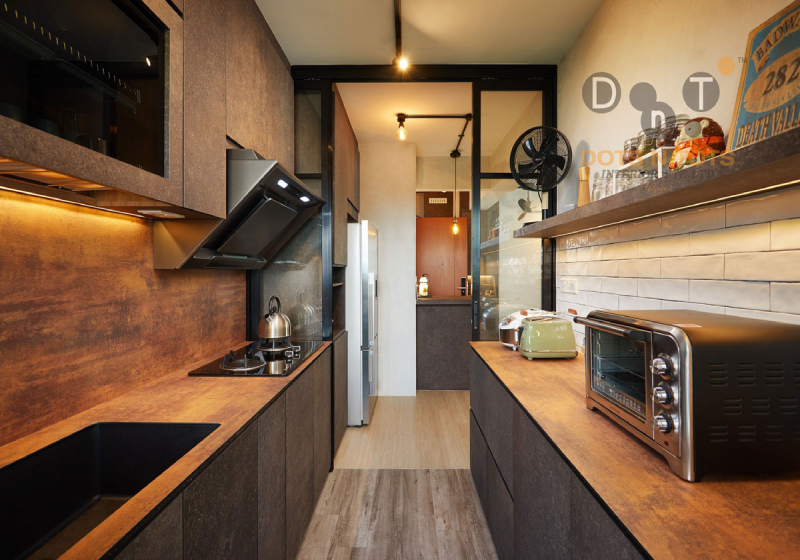9 small kitchen solutions for every kind of layout

Small kitchen problems are real, but not all kitchen layouts will see the same issues.
For kitchen layouts like the one-wall, it may be a lack of storage or countertop space. A small galley layout on the other hand, may face more of a congested traffic flow problem because of how narrow the layout is.
To combat these differing small kitchen issues, we offer up solutions based on your kitchen layout.
ONE-WALL

What is it: All the storage, counter and appliances lined along a single wall
Main problems: Lack of storage + Limited countertop
Solution 1: Go for full-height cabinets
Maximise your cabinet space by building them all the way to the top. Besides having more storage, it also helps to draw the eye upward, creating the illusion of height and therefore, a taller kitchen.
Solution 2: Get a pull-out countertop
Installing a pull-out countertop in one of your drawers means more room for food prep without sacrificing floor estate since it can be stowed away when you are done with it.
GALLEY

What is it: Comprises two parallel runs of counters with a central walkway
Main problems: May not be well-lit + congested traffic flow because of narrowness
Solution 3: Do without the cabinet hardware
Small galley kitchens can get really narrow, which might make it difficult to move about easily. Reduce the obstruction along the central walkway as much as you can by doing away with your knobs and handles. This also helps to create a sleeker, less cluttered cooking space. Go for recessed ones instead or opt for a push-open mechanism.
Solution 4: Remember under-cabinet or shelf lighting
Enveloped between walls, most galley kitchens don't receive a lot of natural light, which can leave your cooking space feeling poorly lit and your countertops too dark. Make sure to include lighting underneath your cabinets or shelves if you have them. To reduce glare on polished surfaces, get diffusers or have your lighting placed at an angle so that it isn't reflecting off a high-gloss surface.
U-SHAPED

What is it: An entrance leading to three connected walls of cabinets and counters
Main problems: Can feel cramped + problematic placement of built-in appliances
Solution 5: Get rid of upper cabinets
For a less cave-like atmosphere that a U-shaped kitchen can bring, do without your uppers. This can lend an airier feeling to your cooking space. Need more storage? Go with open shelves.Solution 6: Open things up
Alternatively, adopt an open concept if possible by removing one side of the wall. Not only does this open up the cramped area, it also turns your kitchen into a cosy eat-in one if you place chairs on the other side of the open counter.
Solution 7: Install built-in appliances away from corners
Because the cabinets are placed so close together in a U-shaped layout, you will want to take extra care that your built-ins such as your ovens and dishwasher can be opened fully without much obstruction, especially when other cabinet doors are also opened. As a general rule, install them away from the corners.
L-SHAPED

What is it: Counters and cabinets run along a perpendicular wall to form an L-shaped
Main problems: Can have an inefficient work triangle + corner cabinet may be too deep
Solution 8: Incorporate an island
If your L-shaped kitchen is particularly disproportionate i.e. you have a way longer length than a width, you might have an inefficient work triangle that makes moving about between your cooktop, sink and refrigerator somewhat tedious. To tackle this issue, include an island in the middle of the kitchen as an extra prep station. For folks who are really short on space, get a mobile freestanding island that can be stowed away when not in use.
Solution 9: Get a slide-out corner cabinet system
Some L-shaped cabinets can be built too deep in the corner, which might make it hard to reach for objects located there. Consider installing slide-out cabinet systems to ensure that items stored there don't go forgotten.
This article was first published in Renonation.